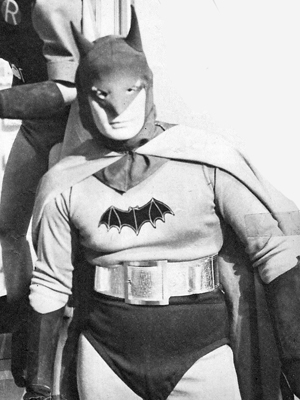Kevin Kelly’s articulation of survival on the long tail was one of the essential readings this year for anyone trying to figure out a new paradigm for Indie and Truly Free Filmmaking. It may be old hat out in blogland, but it is a concept that still hasn’t been discussed enough among indie filmmakers. It promotes the notion that:
A creator, such as an artist, musician, photographer, craftsperson, performer, animator, designer, videomaker, or author – in other words, anyone producing works of art – needs to acquire only 1,000 True Fans to make a living.
As a fan of a great deal of diverse artists, I regularly marvel at how musicians in particular do a good job of maintaining an ongoing dialogue with their fans. Filmmakers, outside of Kevin Smith, don’t seem to embrace this necessity. I suppose it can be argued that prolific artists working in multiple formats, like Michel Gondry, do it well too. The
Safdie Brothers are another good example amongst the more emerging set. But as Kelly points out:
The key challenge is that you have to maintain direct contact with your 1,000 True Fans. They are giving you their support directly. Maybe they come to your house concerts, or they are buying your DVDs from your website, or they order your prints from Pictopia. As much as possible you retain the full amount of their support. You also benefit from the direct feedback and love.
To ignore this advice and still hope for the industry to simply discover you and reward you, limits your options to mainstream tentpole pictures. This may well be some filmmakers’ dream, but they might as well plan to win the lottery. What is so exciting is that there has never been a better time to plan on building the apparatus that allows you to be a Truly Free Filmmaker. The tools to build your 1000 True Fan circle are there. Kelly illuminates:
The technologies of connection and small-time manufacturing make this circle possible. Blogs and RSS feeds trickle out news, and upcoming appearances or new works. Web sites host galleries of your past work, archives of biographical information, and catalogs of paraphernalia. Diskmakers, Blurb, rapid prototyping shops, Myspace, Facebook, and the entire digital domain all conspire to make duplication and dissemination in small quantities fast, cheap and easy. You don’t need a million fans to justify producing something new. A mere one thousand is sufficient.
… This small circle of diehard fans, which can provide you with a living, is surrounded by concentric circles of Lesser Fans.
I have frequently feared that it is the dream of stardom and wealth that fuels both the indie production cycle and film school enrollment lists. Maybe that is because the possibility of survival and being a true artist seemed so impossible. But that does not have to be so, if you invest some time and energy in building your own support system.
Young artists starting out in this digitally mediated world have another path other than stardom, a path made possible by the very technology that creates the long tail. Instead of trying to reach the narrow and unlikely peaks of platinum hits, bestseller blockbusters, and celebrity status, they can aim for direct connection with 1,000 True Fans. It’s a much saner destination to hope for. You make a living instead of a fortune. You are surrounded not by fad and fashionable infatuation, but by True Fans. And you are much more likely to actually arrive there.
Any way, read the article and take it to heart. And for those of you who already know this gospel, please help to promote the word.
 It would seem, to the eyes of Hollywood, the high form of film has become the franchise. It satisfies the two poles of conventional business wisdom: limiting risk as it promises more of the same, maximizing profit as it entices investors with that self-same prospect.[1] The Hobbit is stretched out to encompass three movies, hordes of young adult novels are on the horizon, and Bob Iger suggests Frozen will now be a franchise after its huge success, but it’s hard to imagine that wasn’t always the plan. Strangely, though, two of the pioneers of the form, George Lucas and Steven Spielberg, both predict doom for what they helped create. And the recent failure of The Lone Ranger (and John Carter before that) suggest they might just be right.
It would seem, to the eyes of Hollywood, the high form of film has become the franchise. It satisfies the two poles of conventional business wisdom: limiting risk as it promises more of the same, maximizing profit as it entices investors with that self-same prospect.[1] The Hobbit is stretched out to encompass three movies, hordes of young adult novels are on the horizon, and Bob Iger suggests Frozen will now be a franchise after its huge success, but it’s hard to imagine that wasn’t always the plan. Strangely, though, two of the pioneers of the form, George Lucas and Steven Spielberg, both predict doom for what they helped create. And the recent failure of The Lone Ranger (and John Carter before that) suggest they might just be right. 

